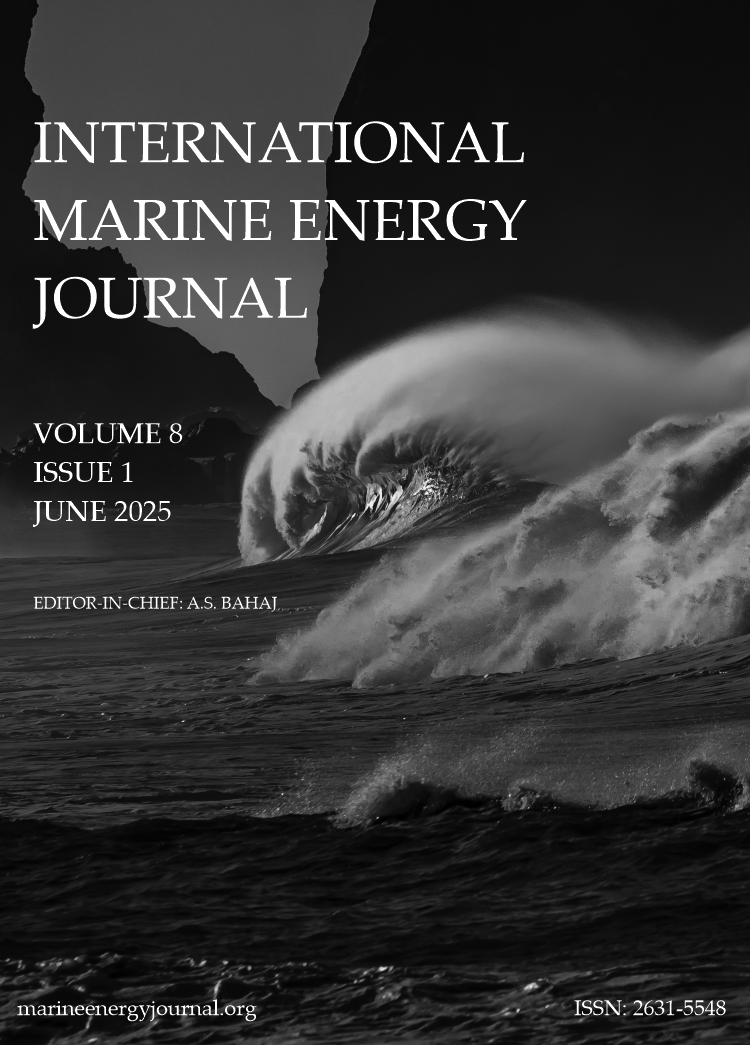An experimental optimization environment for developing an intracycle pitch control in cross flow turbines
DOI:
https://doi.org/10.36688/imej.8.37-46Keywords:
Vertical axis, Optimization, Instrumentation, Tidal turbine, Experiments, CFDAbstract
Cross-flow tidal turbines have not reached the efficiency of horizontal-axis turbines. Among various improvement approaches found in the literature, the intracycle pitch control is one of the most promising ones. It consists in actively pitching each blade as function of the azimuth angle. This paper presents the development of an experimental environment to optimize the intracycle control for cross-flow tidal turbines, the aim of the project OPTIDE, a collaboration of the Otto-von-Guericke-University Magdeburg, Germany, the University Grenoble-Alpes in France and the University of Applied Sciences Magdeburg-Stendal. The experimental system consists of a turbine flume model equipped with a controlled generator. The three bladed turbine will have independently controlled pitch actuators embedded in each blade with a force sensing system. Local high dynamic systems control the speed of the generator and the pitch position as a function of the azimuth angle. A superimposed governing system performs an experimental optimization process. Evolutionary algorithms are to be employed to solve two objectives: (1) maximizing the efficiency and (2) minimizing the structural loads. These kind of problems are usually solved with numerical simulations, which commonly comes with very high computational efforts and uncertainty. For this reason simulations are replaced by an experimental optimization technique. It is expected that this method could quickly and reliably find optimal pitch trajectories once the setup is fully installed. In the course of the project selected cases will be analysed using particle-image velocimetry (PIV) with synchronized force measurements to research the hydrodynamic mechanisms and the effects of the flow control performed by the pitching motion.
In this paper we provide an overview over the decision and design process of the experimental flume setup and the project goals.
Downloads
Published
How to Cite
Issue
Section
License
Copyright (c) 2025 Stefan Hoerner, Roberto Leidhold, Shokoofeh Abbaszadeh, Karla Ruiz-Hussmann, Timo Bennecke, Zhao Zhao, Paul Joedecke, Christian-Thoralf Weber, Pierre-Luc Delafin, Cyrille Bonamy, Yves Delannoy

This work is licensed under a Creative Commons Attribution 4.0 International License.
I the author/we the authors understand that I/we retain copyright over our article. I/we grant a licence to IMEJ to: publish my/our article under the terms of the Creative Commons Attribution (CC BY) License which permits use, distribution and reproduction in any medium, provided the original work is properly cited, and identify IMEJ as the original publisher.


